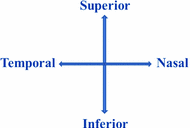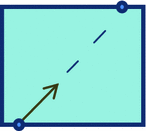Mechanics and spiral formation in the rat cornea
- PMID: 24897951
- PMCID: PMC4282706
- DOI: 10.1007/s10237-014-0592-6
Mechanics and spiral formation in the rat cornea
Abstract
During the maturation of some mammals such as mice and rats, corneal epithelial cells tend to develop into patterns such as spirals over time. A better understanding of these patterns can help to understand how the organ develops and may give insight into some of the diseases affecting corneal development. In this paper, a framework for explaining the development of the epithelial cells forming spiral patterns due to the effect of tensile and shear strains is proposed. Using chimeric animals, made by combining embryonic cells from genetically distinguishable strains, we can observe the development of patterns in the cornea. Aggregates of cell progeny from one strain or the other called patches form as organs and tissue develop. The boundaries of these patches are fitted with logarithmic spirals on confocal images of adult rat corneas. To compare with observed patterns, we develop a three-dimensional large strain finite element model for the rat cornea under intraocular pressure to examine the strain distribution on the cornea surface. The model includes the effects of oriented and dispersed fibrils families throughout the cornea and a nearly incompressible matrix. Tracing the directions of critical strain vectors on the cornea surface leads to spiral-like curves that are compared to the observed logarithmic spirals. Good agreement between the observed and numerical curves supports the proposed assumption that shear and tensile strains facilitate sliding of epithelial cells to develop spiral patterns.
Figures
















References
-
- Alastrué V, Martínez MA, Menzel A, Doblaré M. On the use of non-linear transformations for the evaluation of anisotropic rotationally symmetric directional integrals. Application to the stress analysis in fibred soft tissues. Int J Numer Methods Eng. 2009;79(4):474–504. doi: 10.1002/nme.2577. - DOI
-
- Belytschko T, Liu WK, Moran B. Nonlinear finite elements for continua and structures. London: Wiley; 2000.
Publication types
MeSH terms
Grants and funding
LinkOut - more resources
Full Text Sources
Other Literature Sources

